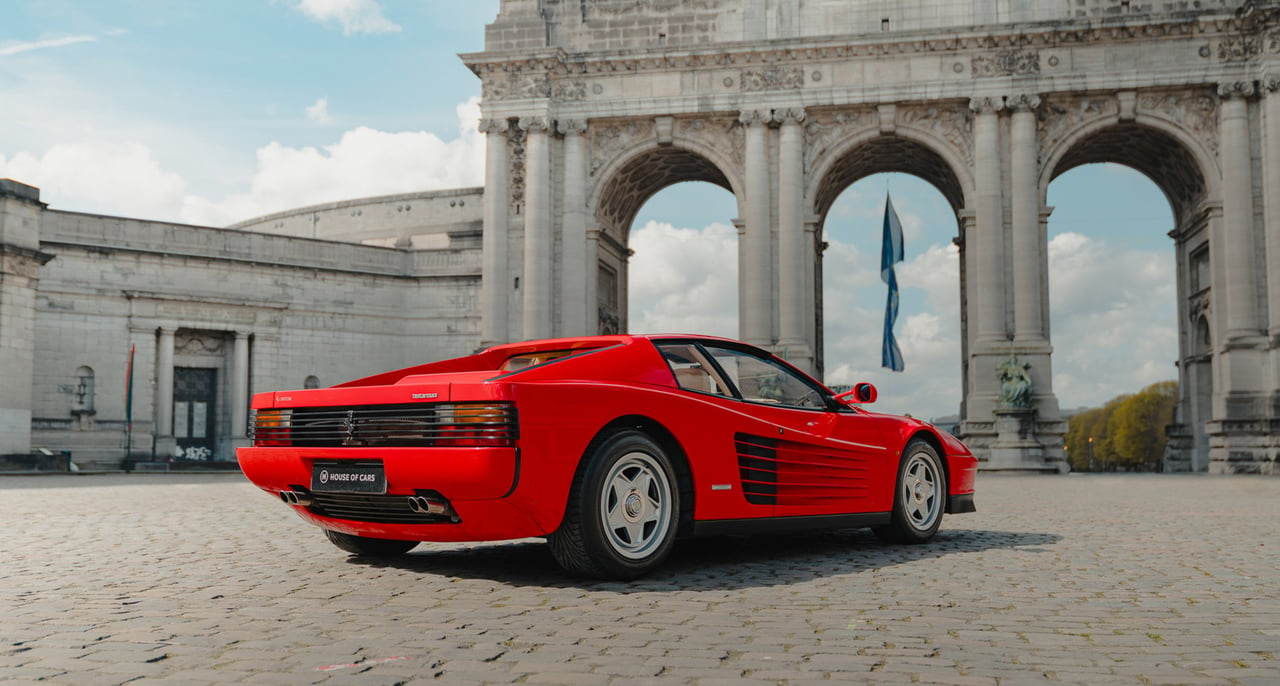
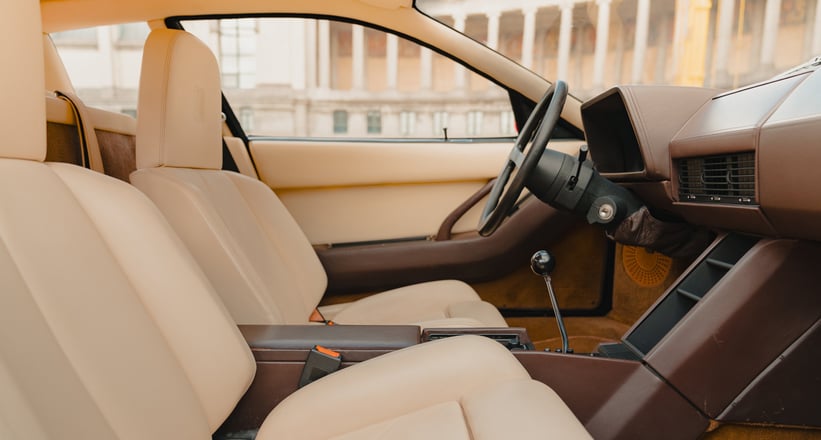

Once in a while, the stars align, and in the 1980’s no star was brighter than the Ferrari Testarossa. Ferrari’s red giant would inextricably connect name to colour to shape in unforgettable causality that Kandinsky would be proud of, and herald a look that would dominate the decade.


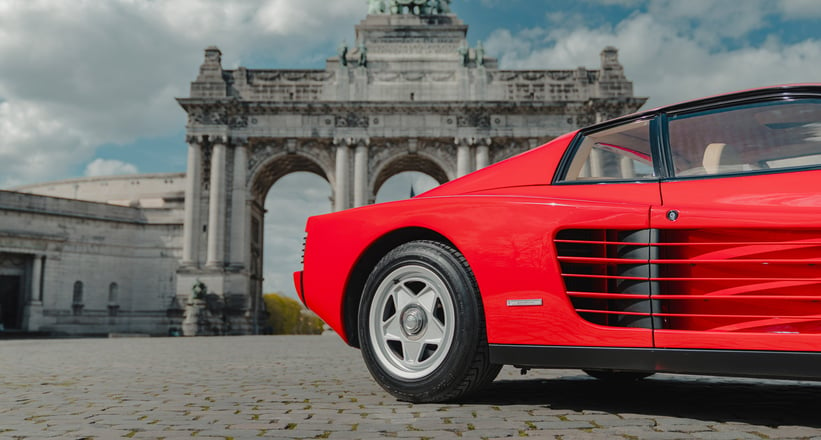
Not the unctuous swagger a Berlinetta Boxer imparts, the Testarossa’s body is chiselled into blocks that banish its predecessor’s fuselage to the past. Before you even get to the side-vents, the Testarossa’s masterstroke is its side-splitting shoulder-line. What starts as a vapour-trail behind the front wheel unfurls into a new volume at the rear, dividing the bodyside in two. This burlesque rooster-tail licks the body like a solar flare, and creates the frame from which hang sheer surfaces. It is here, beneath the shoulder, that five straight fins of metal would go on to grant the Testarossa immortality.


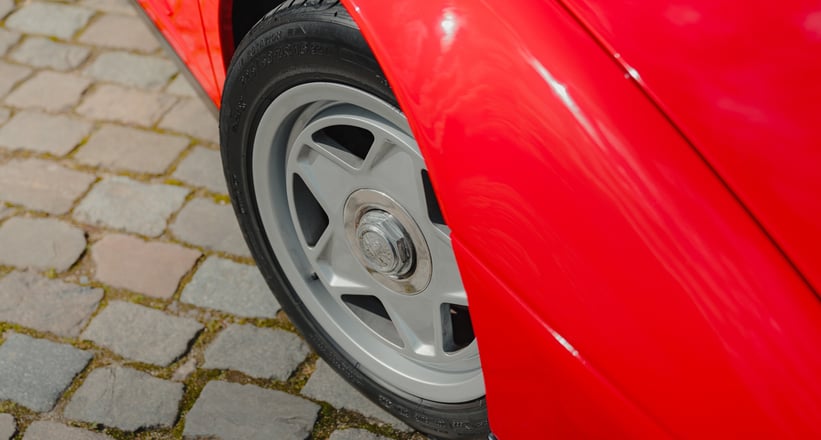
The bravado of the air-intakes is hard to overstate, more so given that the Pininfarina design team, headed by Leonardi Fioravanti, had originally sought to conceal them. Viewed strictly in profile, it is almost shocking to see the contrast between the long nose and the cut-off rear. But you will never see the car like this: it is too low to view only in two dimensions. Far better to see the rear three-quarter, where a black grille stretches corner-to-corner like a chest-expander. Such a simple thing: this rudimentary addition pairs perfectly with the power ballad bodyside that dominates the car. That the top of the lamps barely exceeds the height of the wheel-arch gives the car VHS proportions. A stance lower and wider is hard to imagine.


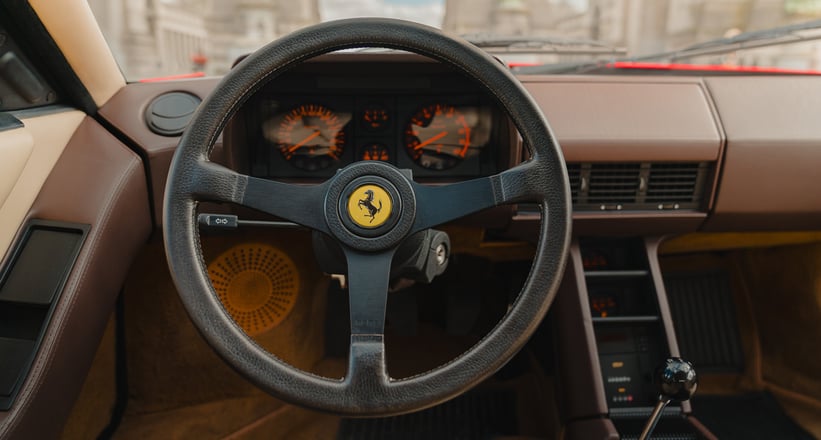
Pininfarina’s show-stealing styling would take your breath away, and touched mortal Peugeots 205 and 405, whose ribbed black masks at the rear aped the Italian. These cars acted as conduit to the tuning market, in particular Dimma, who would capture the 205 T16 unerringly. The subsequent GTi/Mi16s, and products such as Minis Red Hot and Jet Black, capitalised on the Testarossa’s Rosso Corsa, as 1980s streets became chequered by the red-black of the era’s hot-hatches.
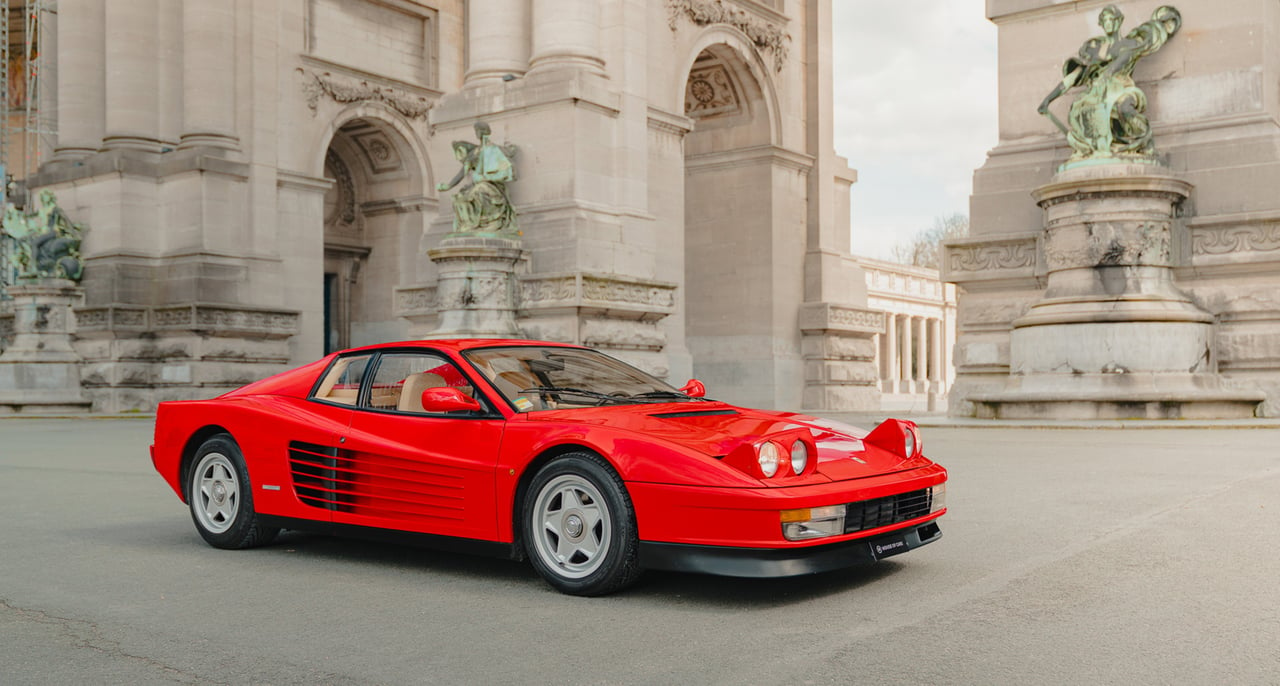


None so hot as the redhead, though. When all the test-drives have been driven, and the flat-12’s performance has been bested by EVs, what remains is its story and the styling. There is no racing pedigree here to tell; none is needed. The sight alone of a Ferrari Testarossa lavishes more stardust than most cars will in a lifetime.
The fabulous Ferrari Testarossa is you see here comes courtesy of House of Cars, and can be found alongside a plethora of other outstanding examples in the Classic Driver Market.


















